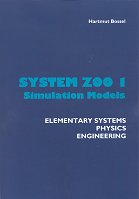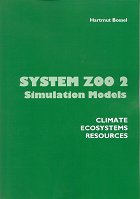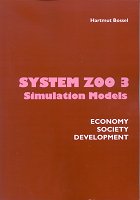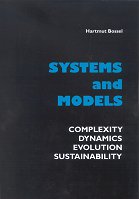About one hundred simulation models from all areas of life are fully documented in the three volumes of the ‘System Zoo’. They can be quickly implemented and easily operated using freely available system dynamics software.
Volume 1 of the System Zoo contains simulation models of elementary processes, and of complex systems from physics and engineering, among them: exponential and logistic growth, oscillations, delays, and storage; phenomena of infection, transition, and overload; complex systems with limit cycles, multiple equilibrium points and chaotic attractors; and applications from control engineering, flight dynamics, fluid flow and heat conduction.
The System Zoo collection of simulation models is particularly well-suited for teaching, training, and research projects at all levels from high school to university, and for individual study. Volume 2 of the System Zoo contains simulation models related to climate, vegetation, ecosystems and resources. Volume 3 deals with systems and processes found in economy and society, and with long-term global development.



